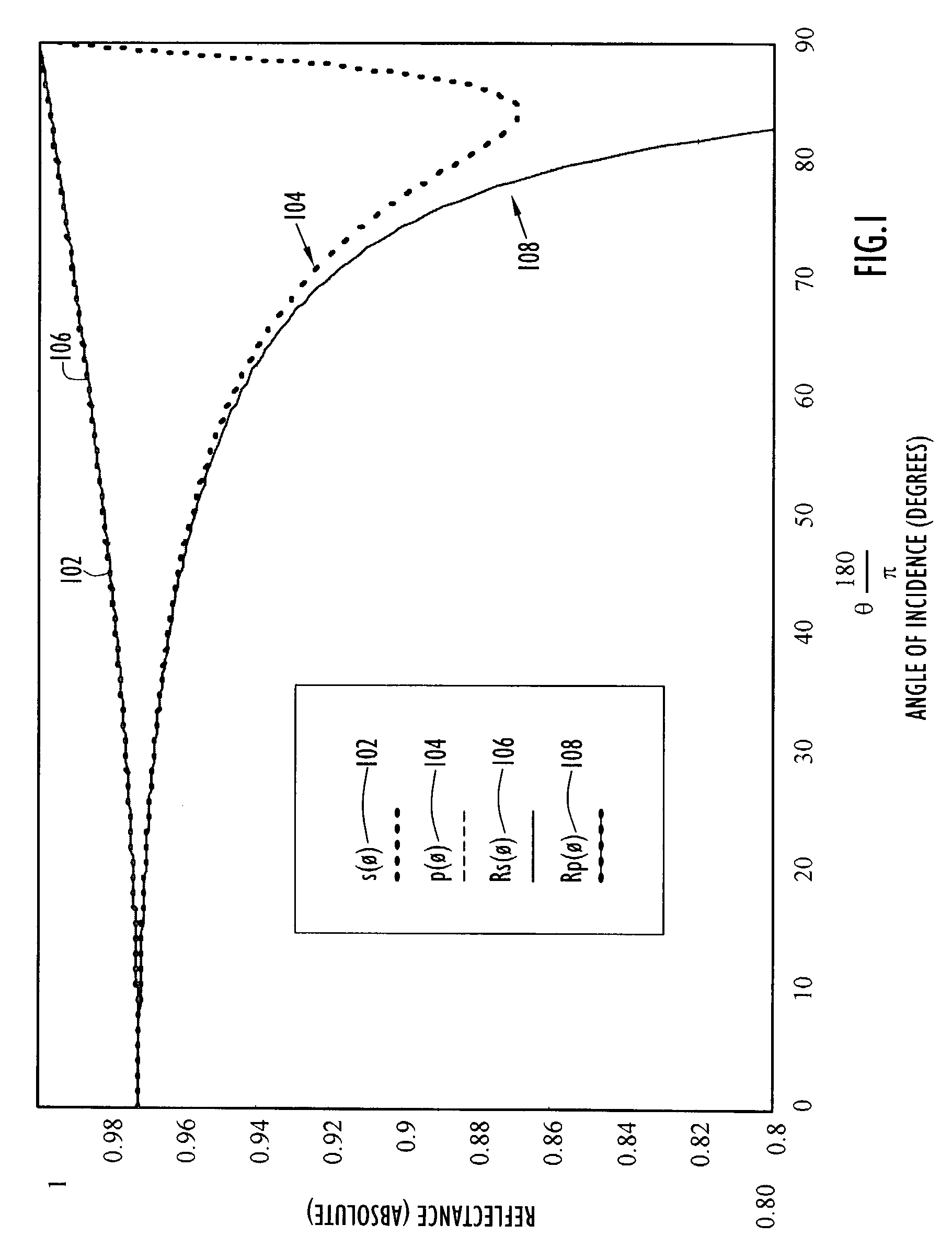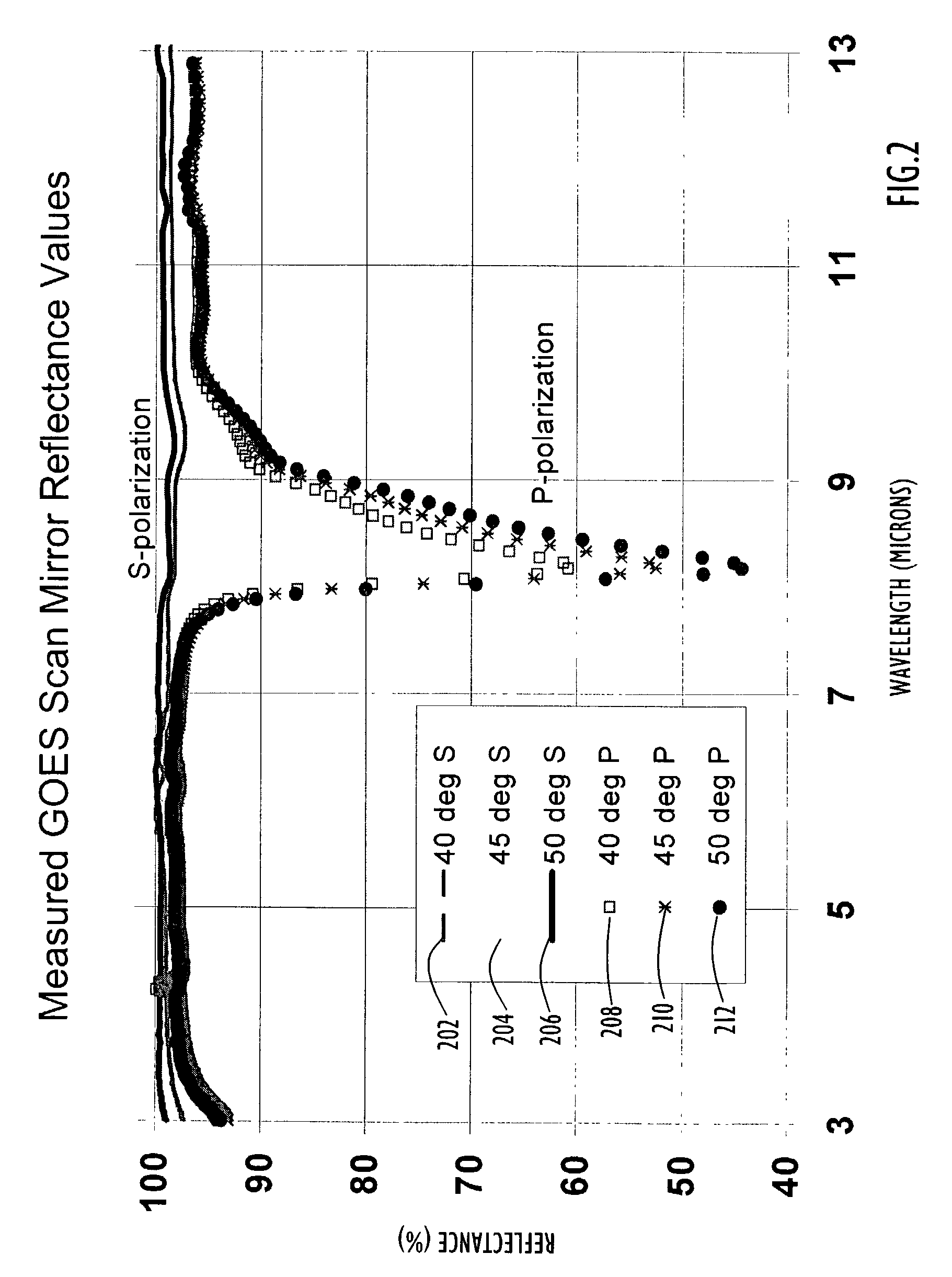Methods and apparatus for analyzing mirror reflectance
a mirror reflectance and apparatus technology, applied in the direction of optical radiation measurement, reflective surface testing, instruments, etc., can solve the problems of reducing the calibration accuracy of the remote sensing instrument's output measurement, affecting the quality of the scan mirror reflectance, and affecting the calibration accuracy of the remote sensing instrument, so as to accurately and accurately assess the reflectance characteristics, accurately determine the quality of the mirror reflectance value, and accurately adjust the signal measurement
- Summary
- Abstract
- Description
- Claims
- Application Information
AI Technical Summary
Benefits of technology
Problems solved by technology
Method used
Image
Examples
Embodiment Construction
[0039]Preferred embodiments according to the present invention are described below with reference to the above drawings, in which like reference numerals designate like components.
[0040]The Fresnel reflection from smooth metal surfaces is a well-understood and highly characterized phenomenon. Light at a single wavelength can be characterized by an S-polarization vector and a P-polarization vector. The S-polarization electric vector is always parallel to the mirror surface (by definition in the measurement setup context), resulting in very little effect of angle of incidence on that polarization. However, the P-polarization vector can be significantly affected by angle of incidence. Approximate Fresnel reflectance equations for S-polarization and P-polarization as a function of angle from a smooth metal surface are given by: RP=(n2+k2)cos2θ-2ncosθ+1(n2+k2)cos2θ+2ncosθ+1(1)and,RS=(n2+k2)-2ncos2θ+cos2θ(n2+k2)+2ncos2θ+cos2θ(2)
[0041]The index of refraction...
PUM
 Login to View More
Login to View More Abstract
Description
Claims
Application Information
 Login to View More
Login to View More - R&D
- Intellectual Property
- Life Sciences
- Materials
- Tech Scout
- Unparalleled Data Quality
- Higher Quality Content
- 60% Fewer Hallucinations
Browse by: Latest US Patents, China's latest patents, Technical Efficacy Thesaurus, Application Domain, Technology Topic, Popular Technical Reports.
© 2025 PatSnap. All rights reserved.Legal|Privacy policy|Modern Slavery Act Transparency Statement|Sitemap|About US| Contact US: help@patsnap.com



